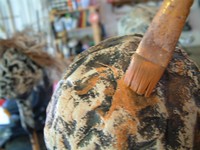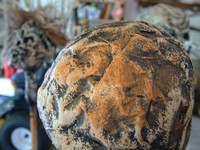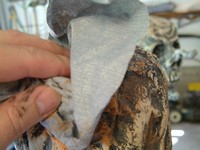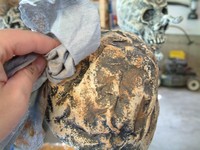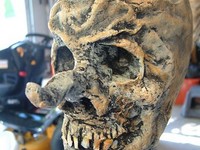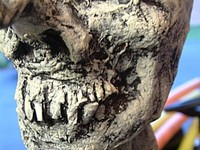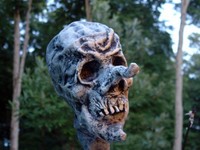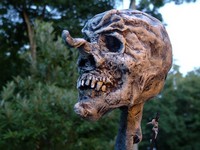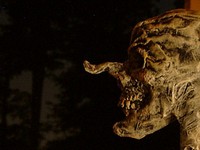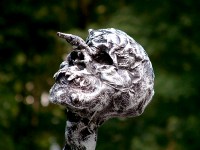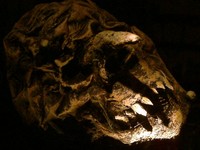Make paper mache witches
Hair today ...
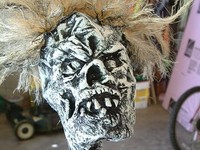
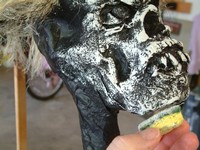
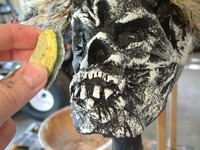
Calamity, our nose-less witch, gets the same layering treatment as her sister. If you're the impatient type, and don't really care about oh-so-subtle color variations (she's probably going to be sitting out in the yard hovering over a spotlighted cauldron anyway), then you might choose to apply that first stark color and call it a day.
Her thumb-in-a-light socket hairstyle was made from a foot or two of debraided sisal rope. Just unravel some rope, gather into "plugs", and attach one end to the scalp with hot glue. I love this stuff. Sisal rope is a versatile tool for all sorts of haunt applications. Unlike Nylon rope or clothesline, sisal rope looks old. Its aged appearance, and exceptional strength, make it the perfect solution for lashing Grumbles to trees, tying convincing nooses, hanging signs, and rigging 50lb skeletons from garage ceilings.
Pigments of your imagination - A note on color theory
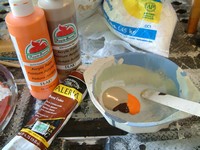
Color theory is fascinating, but it can get overwhelmingly complex when you over-think what you're doing. Experimentation is your best friend, but I have encountered folks on whom the concept is completely lost. A lady contacted me once, stating that she required the Pantone color numbers I used on the Moth Brothers. I don't recall my exact response, but you can bet it was indeed colorful.
Hue, saturation & lightness
There are many color models, but a simple method to describe colors in a way that makes sense to me is to define them in terms of hue, saturation, and lightness (HSL). Think of hue as the complete color spectrum. Saturation is how colorful something is, and lightness is what it says.
When mixing colors, start with a neutral base. I like earthy tones, so I almost never start with white. I keep a few hundred gallons of tan, taupe, and gray on hand. Next, mix a small amount of color to get the desired hue. Colors can be warmed by adding orange or yellow. If the color seems too bright and happy, like a hot dog stand, then you can mix in a little more of the base color to tone things down.
Adding color
I know what you're thinking. "Why go through all the trouble of painting something black just to gob it over with white? And now you're going to paint over that too?" Heh... you got it, paly. And you know why? Because I'm a lousy painter.
How long do you think it would take to paint all those little bumps, witch moles, cracks, and creases individually? Dry-brushing did that for me automatically, and now all I have to do is add a little color.
Adding tint (our sort-of-orangey-tan, in this case) is as easy as dabbing it on, and then patting with a damp towel to soften the edges and spread it around. Rubbing the area can also make some interesting effects.
Another method of applying tint to a witch head, or any neutral background, is to thin your paint, making a wash. Then, just brush it over the entire surface.
This is an excellent way to avoid 90% of the characteristically OCPD detail-work on which I apparently waste most of my time.
